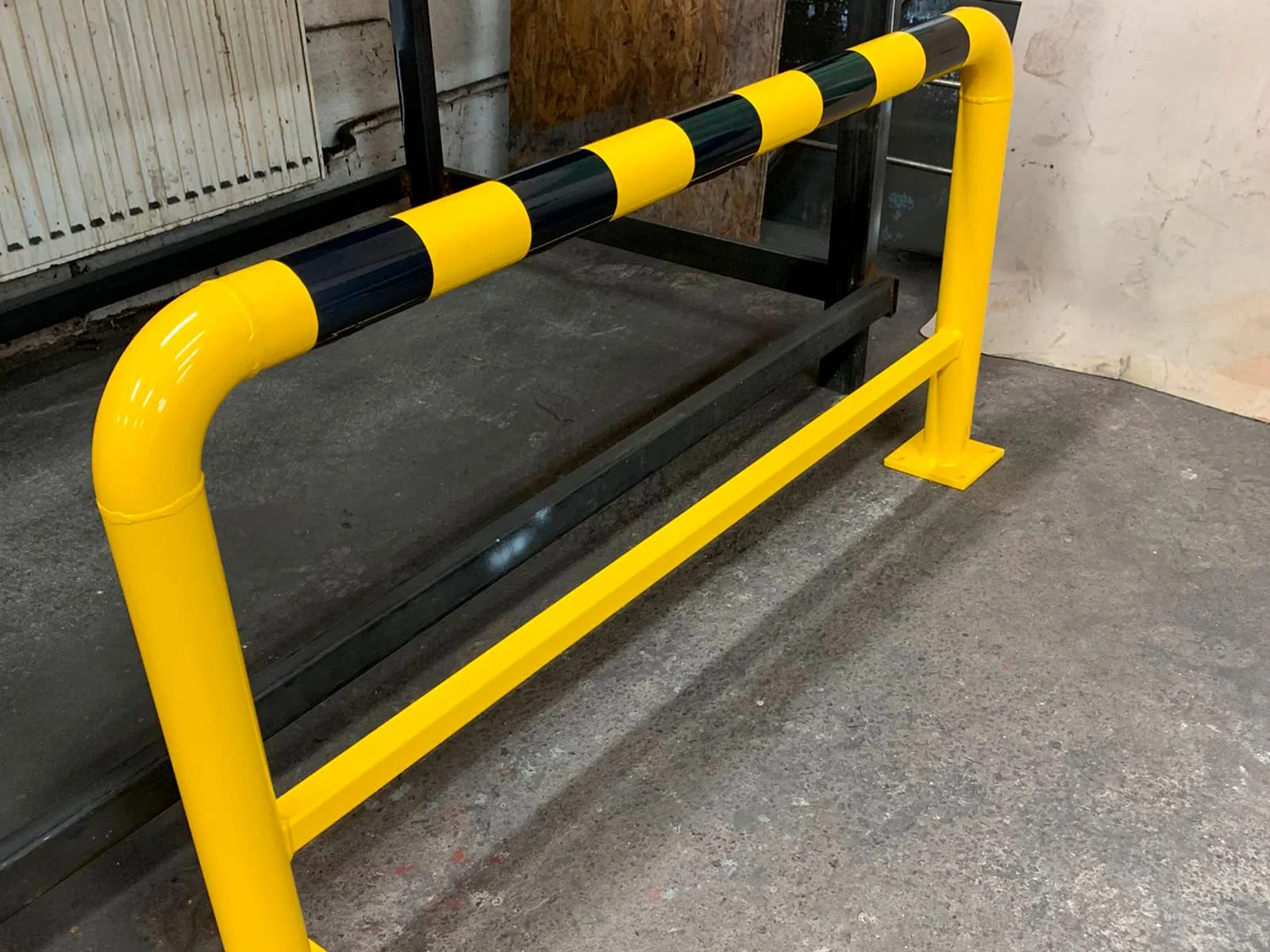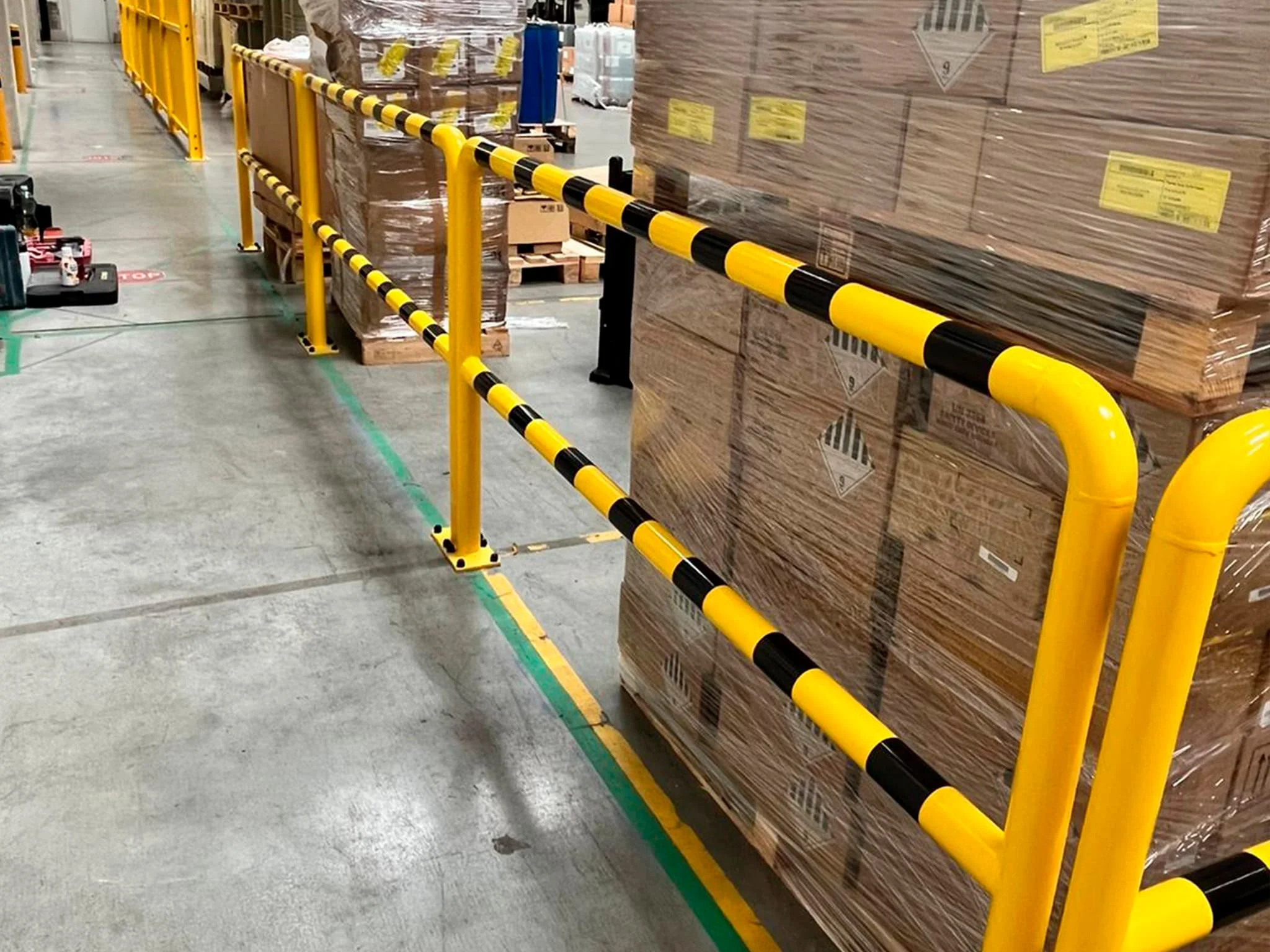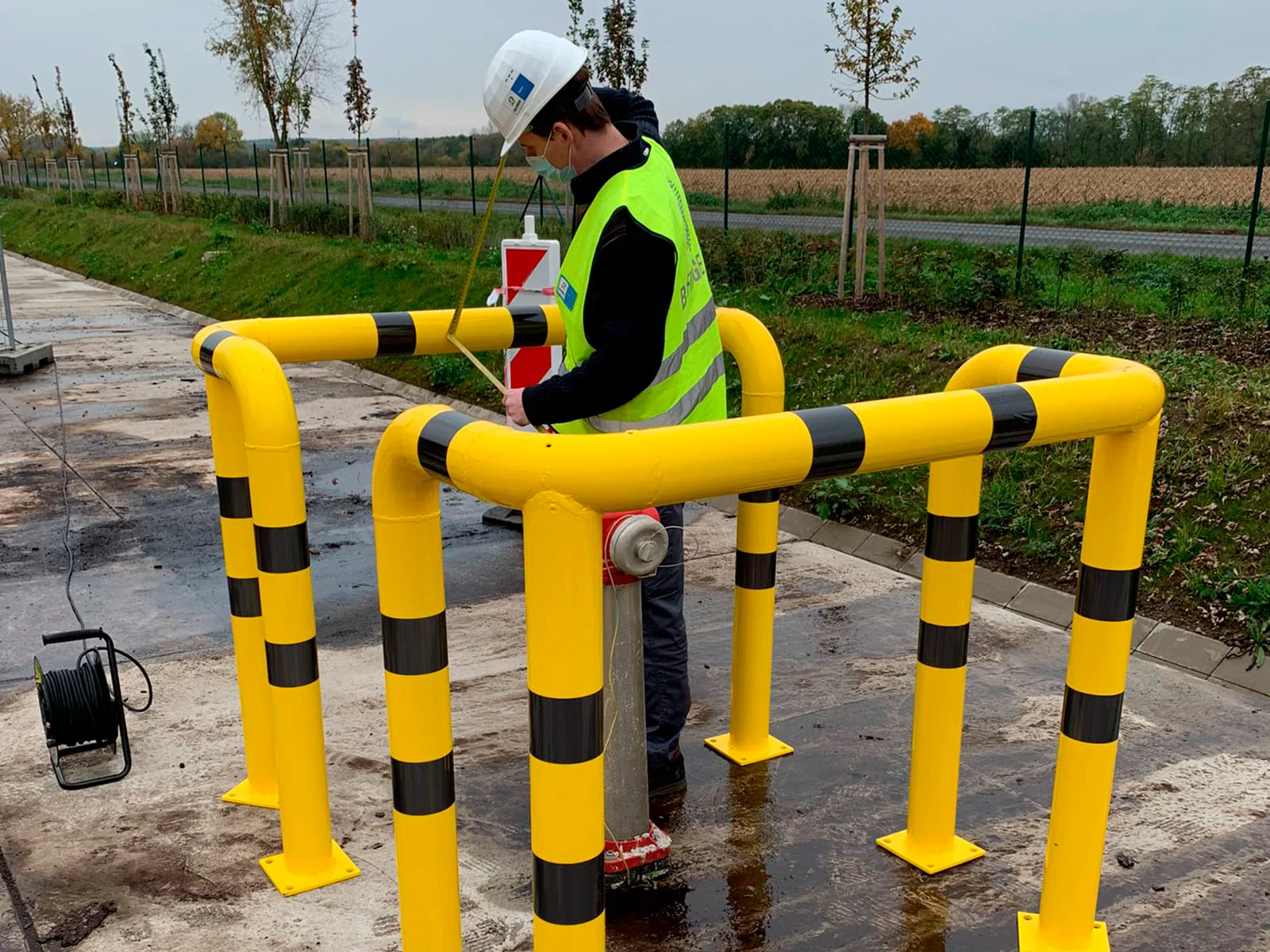How to choose safety barriers for warehouse and production?
Choosing the right safety barriers for a warehouse is not an easy task for most business owners, but it is a key component that ensures safety for both employees and stored products.
Safety barriers, also known as wall protection, are used in both the industrial and commercial warehousing sectors to protect building structures, serve as protection against accidents, and provide safety for products and machinery.
Below are some key factors to consider when selecting bumpers for industrial concrete floors.
The choice of safety barriers depends largely on the type of industry in which you operate. Some warehouses require special protection at sensitive points, for example where heavy machinery or tools are located. In such cases, forged steel bumpers may be ideal.
Industrial bumpers are available in various materials such as steel, rubber, plastic, etc. The choice depends on your industrial needs and budget. For example, rubber bumpers are flexible, impact-resistant, and cheap.

Impact resistance is a key factor to consider when selecting safety barriers. They must be able to withstand heavy impacts, regardless of the type of vehicle or equipment that may expose them to impact.
Another factor to consider is the dimensions of the warehouse. Whether the warehouse is small, large or huge determines what safety barriers are needed. For example, in smaller warehouses it may be sufficient to use smaller and simpler bumpers.
Of course, the amount of the available budget is of great importance when choosing the appropriate safety barriers. However, remember that cheap does not always mean better. It is important not to compromise durability and quality for the sake of lower costs.
When choosing bumpers, it is also worth paying attention to the ease of installation and subsequent maintenance. By choosing a model that is easy to install and does not require frequent maintenance, you can save a lot of time and money.
Finally, remember to always consult experts and suppliers about the best safety barriers for your warehouse. The right choice of industrial bumpers will increase the safety of both employees and items stored in the warehouse.

What is the difference between safety barriers for warehouse and production?
Safety barriers are used in various industrial sectors to protect equipment, machinery and other surfaces from damage.
Although users may expect bumpers to serve a single purpose, there are significant differences between bumpers designed for use in a warehouse and those used in manufacturing. Considering that both warehouses and production sites are high-activity areas with constant traffic, it is crucial to ensure safety and protection with the right industrial bumpers.
Bumpers used on resin floors in warehouses are typically made of strong, impact-resistant materials such as steel or high-quality rubber. They are designed to withstand the daily wear and tear of heavy warehouse equipment such as forklifts and palletizers. They are often installed in places where there is a high risk of accidental impact, for example near doors, gates or pallet storage areas.
Warehouse bumpers are designed to minimize the risk of damage to warehouse and structural equipment while ensuring employee safety. They can also be designed to help navigate and direct traffic in a warehouse environment.

On the other hand, safety barriers for manufacturing are designed to protect specialized machinery and equipment. Therefore, they can be made of various types of materials, depending on the specificity of production and the type of machines they are intended to protect.
Manufacturing bumpers are often designed to protect expensive machinery and equipment from impacts from other machinery or carts used to move materials, or to protect polished concrete. They can also be used to protect workers from potentially dangerous machine parts.
The primary purpose of industrial bumpers, regardless of where they are used, is to protect both equipment and personnel. Warehouse barriers are usually more durable and impact-resistant, while industrial bumpers for production may be more specialized, adapted to specific machines and devices. However, it is important to remember that regardless of whether bumpers are needed for a warehouse or production, they should always be appropriately selected for the specific environment and meet specific requirements and safety standards.





